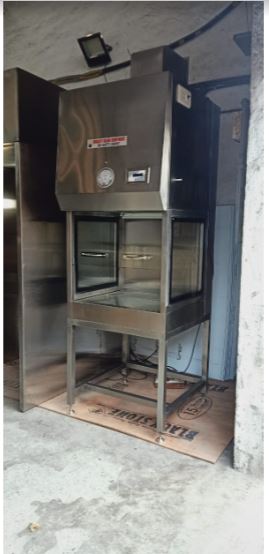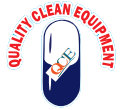
An “SS Bio Safety Cabinet” refers to a biosafety cabinet (BSC) that is constructed using stainless steel (SS) materials. A biosafety cabinet is a specialized piece of laboratory equipment designed to provide a controlled and contained environment for working with potentially hazardous biological materials, such as microorganisms or pathogens. The use of stainless steel in the construction of the cabinet enhances durability, cleanliness, and ease of cleaning. Here’s a breakdown of the key terms:
- SS (Stainless Steel): The cabinet is made using stainless steel, a material known for its resistance to corrosion, durability, and ease of maintenance. Stainless steel is often used in environments where cleanliness and hygiene are essential, such as laboratory settings.
- Bio Safety Cabinet: A biosafety cabinet is a ventilated enclosure designed to provide both personnel and environmental protection. It uses a combination of HEPA filtration and controlled airflow to prevent the release of harmful microorganisms or particulates into the laboratory environment.
Key features of an SS Bio Safety Cabinet might include:
- Class Levels: Biosafety cabinets are classified into different levels (e.g., BSC Class I, II, or III) based on the type of protection they offer and the type of work being conducted. The cabinet’s design and airflow are tailored to suit the required level of containment.
- HEPA/ULPA Filtration: The cabinet incorporates HEPA or ULPA filters to capture and remove airborne particles, providing a sterile working environment.
- Airflow System: Biosafety cabinets use a combination of exhaust and supply airflows to maintain proper containment and protect both the operator and the environment.
- Glove Ports: Many biosafety cabinets include glove ports that allow the operator to manipulate materials inside the cabinet without direct contact, maintaining a barrier between the operator and the hazardous materials.
- Control Panel: The cabinet may have a control panel for adjusting airflow velocity, setting alarms, and controlling the UV lamp used for sterilization.
- UV-C Sterilization: Some cabinets feature UV-C germicidal lamps to help sterilize the interior of the cabinet between tasks.
- Front Opening: The front of the cabinet typically has an opening with a sash or window that allows the operator to interact with the materials inside the cabinet while maintaining containment.
When selecting an SS Bio Safety Cabinet, it’s important to consider the type of work you’ll be conducting, the level of containment required, and the relevant safety regulations and guidelines. The cabinet’s design and features should align with your specific biosafety needs to ensure both operator safety and environmental protection.
LOCATION:
| VASAI | VAPI | DAMAN | HARIYANA | GOA |
| ANDHERI | BARAMATI | AHMEDABAD | HARIDWAR | RAJASTHAN |
| THANE | NASHIK | KOLKATA | SIDDCUL | UDYAPUR |
| TALOJA | DAHEJ | CHENNAI | SIKKIM | HYDERABAD |
| PALGHAR | SURAT | BENGALURU | INDORE | TURBHE |
| BOISAR | VADODARA | BADDI | UTTAR PRADESH | HINJWADI |

